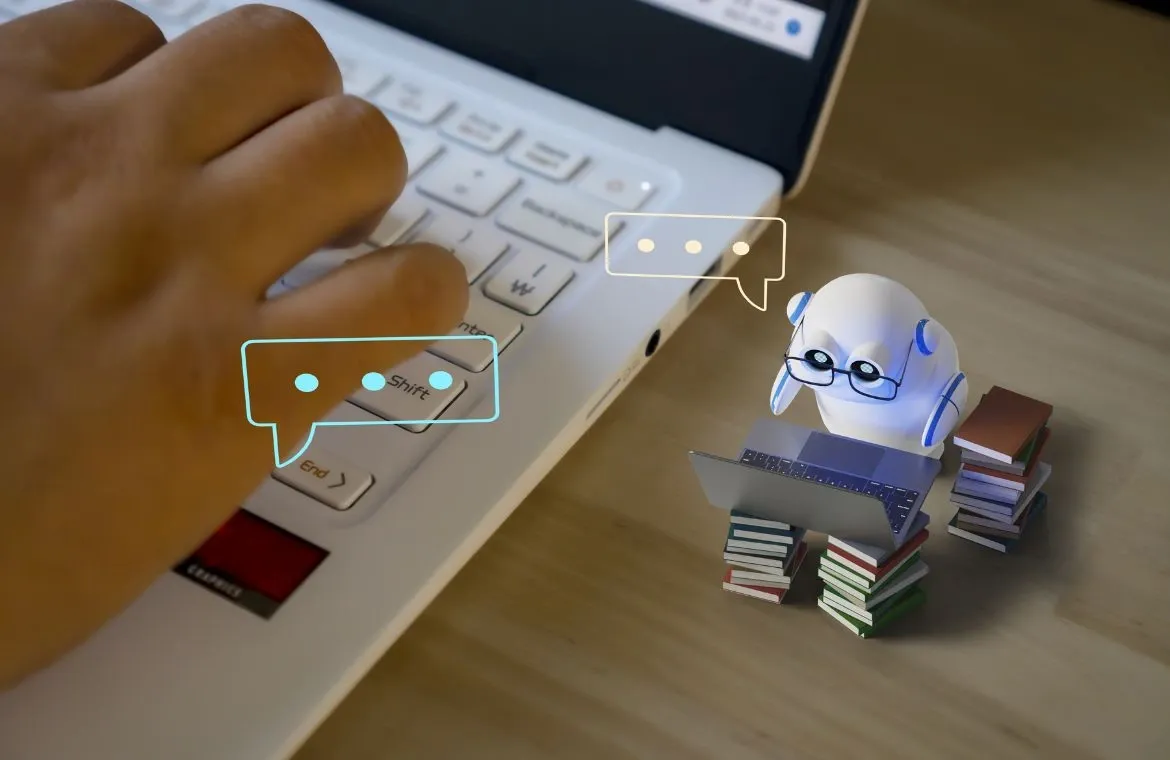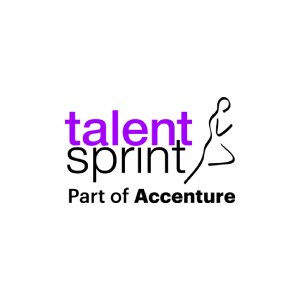ChatGPT in Education: A New Learning Assistant

Imagine a teacher who can instantly generate lesson plans, quizzes, and creative assignments. Or a student who can practice interview questions without a mentor. With ChatGPT, this is real. It’s helping teachers save time and helping students become more confident learners. Schools in India are already experimenting with ChatGPT to enhance learning, making it more dynamic and inclusive.
"ChatGPT won’t replace educators , it amplifies what we do by supporting every learner, everywhere."
ChatGPT in Education
For years, learning meant reading textbooks, writing on chalkboards, and spending long hours in coaching centres. But things are changing quickly. Today’s students are digital natives as they’re accustomed to asking questions on Google, interacting with Alexa, and now, even hold conversations with AI chatbots like ChatGPT.
With ChatGPT, learning has become more interactive, personalised, and always accessible. Whether it’s understanding a science concept late at night or getting help with a debate speech, this AI tool is quietly changing how students learn.
How ChatGPT is working for Learners?
ChatGPT is enhancing education by helping students learn anytime with instant explanations, creative support, and personalised guidance. For teachers, it streamlines lesson planning, simplifies content, and offers creative teaching aids, making classrooms more efficient, inclusive, and engaging for all types of learners.
ChatGPT for Students
Students at all levels are finding new ways to learn better with AI help. The use of ChatGPT in education brings many practical benefits that help students develop their academic skills.
Getting help with complex topics
Students can use ChatGPT to break down complex information into simpler parts. The AI acts as a study buddy that talks about many subjects. It answers questions and explains things better than static resources. ChatGPT helps students understand tough subjects by splitting them into smaller, easier pieces.
This creates a better learning experience. The AI can kickstart research by giving students a solid grasp of topics. It connects ideas that other sources might miss or hide in long chapters.
Practicing language and writing
ChatGPT works great as a practice partner that's always ready to help. The system knows more than 100 languages, which makes it perfect to practice conversations when no one else is around.
Students can ask for topic-specific words, learn grammar rules, and get custom exercises to help them learn better. The AI can also show how words sound using the International Phonetic Alphabet, which helps students say foreign words correctly.
Editing and improving assignments
ChatGPT has become a go-to tool for students to make their writing better. As an editor, it spots grammar mistakes, makes complex sentences clearer, and keeps the writing style consistent.
The AI looks at how ideas flow and checks if arguments make sense. It suggests ways to make writing shorter and more interesting based on what the assignment needs. Students become better writers as they use this feedback.
Learning at your own pace
The best part about the use of ChatGPT in education is how it creates custom learning paths for each student. The system lets students work at times that suit them best. This creates a flexible learning environment.
Students can go over tough topics as many times as they need until they understand them well. The AI works like a patient teacher who gives quick feedback without making students feel bad. This helps them take charge of their learning journey at a comfortable speed.
How is ChatGPT Benefiting the Teachers?
Teachers struggle with time constraints in today's educational environments. ChatGPT in education gives teachers practical solutions that let them spend more time with students instead of paperwork.
"AI is not here to replace teachers, it’s here to help them teach better."
Saving time on repetitive tasks
ChatGPT helps teachers get back their valuable classroom time by handling routine tasks. The AI assistant quickly creates quizzes, assignment outlines, and drafts emails to parents and colleagues.
Teachers use ChatGPT's outlines to help students who need extra support. Students get customised study guides and practice problems, which lets teachers put more energy into working directly with them.
Supporting diverse learning needs
Use of ChatGPT in education goes beyond just saving time - it makes learning more inclusive. Teachers can create materials that work for students with different abilities and learning styles. ChatGPT turns complex texts into easy-to-read formats for students with visual impairments.
The AI also works as a translation tool that converts content into 95+ languages for diverse classrooms. Teachers can ask for specific adjustments that match each student's needs and create fair learning spaces for everyone.
Generating creative teaching ideas
ChatGPT has become a source of inspiration for teachers who want exciting classroom activities. The AI comes up with:
- Interactive games like vocabulary bingo and scavenger hunts
- Real-life scenarios to practice language skills
- New ways to teach tough concepts
ChatGPT in higher education works like a teaching assistant that takes care of mechanical tasks. This lets educators focus on what really counts: connecting with students and helping them understand deeply.
The Pros and Cons of using ChatGPT in Education?
AI technologies are reshaping global classrooms and transforming how students learn. ChatGPT in education continues to evolve and will substantially affect future learning models. But, The excess of everything is bad because, the more you make something your habit, the more you depend on it.
| Pros of ChatGPT | Cons of ChatGPT |
| 1. Personalised learning at scale:ChatGPT brings a fundamental change to traditional teaching methods by customising content for each student's needs. The technology reviews student responses and progress to create adaptive learning pathways. | 1. Over-reliance and misinformation: ChatGPT's benefits come with drawbacks. The system sometimes creates incorrect information and produces "hallucinations", made-up facts presented as truth. Students who depend too much on ChatGPT face serious risks. |
| 2. Multilingual and inclusive education:ChatGPT shows remarkable potential in diverse educational settings through its multilingual teaching capabilities. | 2. Ethical concerns in academic integrity:ChatGPT can help students develop ideas and improve their writing, but the line between proper help and cheating becomes blurry. |
| 3. Balancing AI with human teaching:Teachers and technology must work together effectively. Educational experts agree that human interaction should remain central to education. Machines cannot replace teachers—their role evolves to guide AI-enhanced learning experiences | 3. Bias and inclusivity challenges:Bias remains a constant worry. ChatGPT learns from internet text, which means it picks up existing social biases. This can make current inequalities worse in education, especially for students who already face disadvantages. |
Future of ChatGPT in Education
ChatGPT’s future in education isn’t about replacing teachers or handing out easy answers. It’s about supporting learners, scaling quality education, and augmenting human insight with intelligent assistance. With the right policies, training, and intent, it can help us build a smarter, more equitable learning ecosystem for the next generation.
Conclusion
ChatGPT has become a game-changing educational tool that has altered the map of student learning and teaching methods. This AI assistant creates new opportunities for customised learning, saves time, and enables creative teaching approaches.
Despite this, major challenges still persist. Schools need to carefully address academic integrity issues, potential misinformation, and students becoming overly dependent on AI. Clear policies regarding the proper use of AI must strike a balance between state-of-the-art technology and ethical standards.
ChatGPT will keep revolutionising education. Customised learning for large groups, improved access for diverse learners, and support for multiple languages mark just the beginning of this educational transformation.
AI literacy has become crucial for future careers and ChatGPT serves as both a classroom resource and preparation for an AI-driven world.
"When used wisely, ChatGPT becomes a tool for curiosity, not a tool for shortcuts."
Frequently Asked Questions
Q1. What is the role of ChatGPT in education?
ChatGPT supports education by providing instant explanations, personalized learning help, and writing assistance, making learning more accessible, engaging, and tailored to individual student needs.
Q2. How to use AI as a teaching assistant?
AI can be used as a teaching assistant by automating administrative tasks, offering personalized feedback, answering student queries, generating quizzes, and supporting differentiated learning, allowing educators to focus more on mentoring and creative instruction.
Q3. What is multilingual learning assistant using ChatGPT?
A multilingual learning assistant using ChatGPT helps students learn in multiple languages by translating content, answering questions, and offering explanations in their preferred language, making education more inclusive and accessible across diverse linguistic backgrounds.

TalentSprint
TalentSprint is a leading deep-tech education company. It partners with esteemed academic institutions and global corporations to offer advanced learning programs in deep-tech, management, and emerging technologies. Known for its high-impact programs co-created with think tanks and experts, TalentSprint blends academic expertise with practical industry experience.



